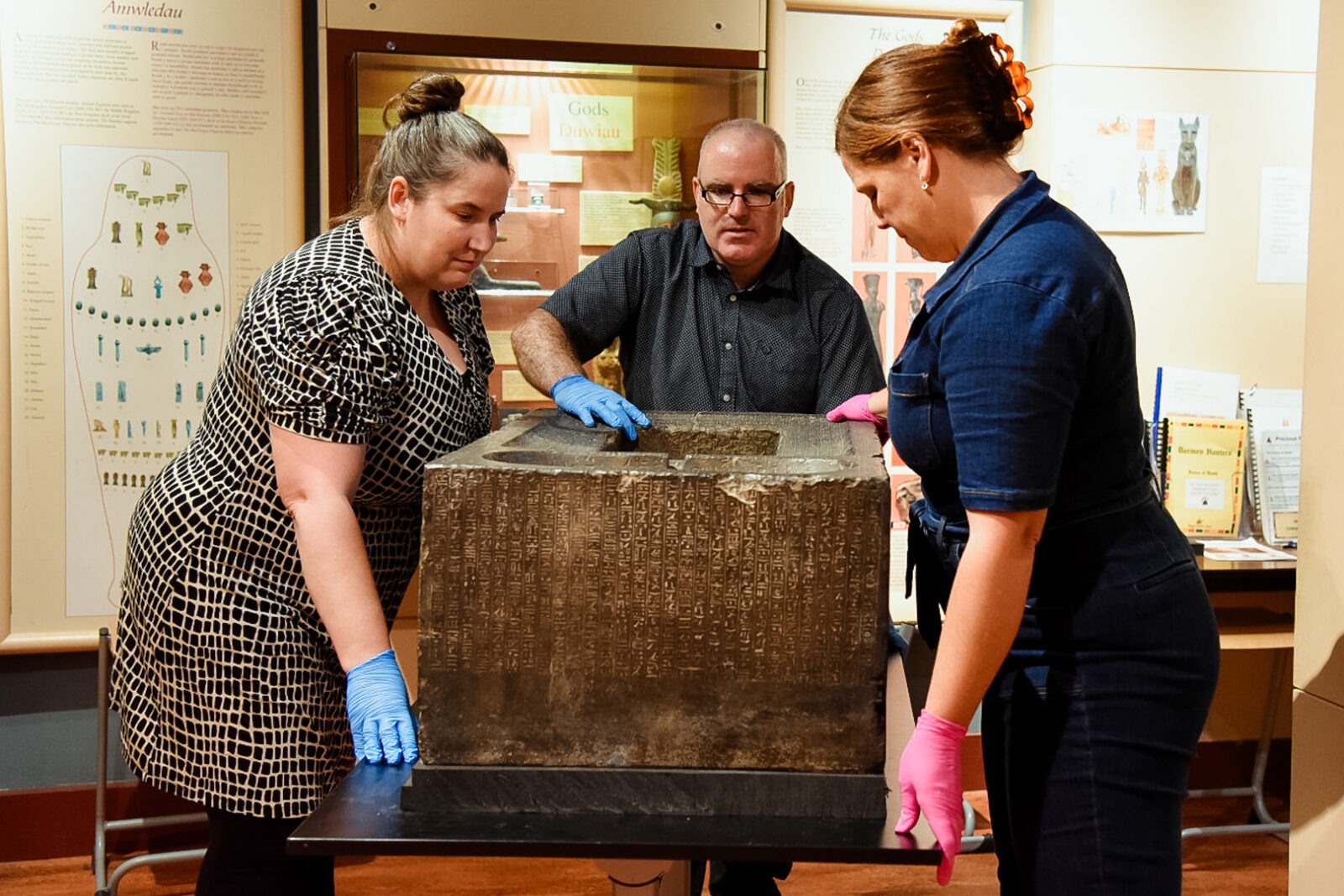Swansea University’s Egypt Centre given rare opportunity to host and study the artefacts that date back 6,000 years.
Having spent the majority of their existence in private collections, over 800 rare Egyptian antiquities have arrived at Swansea University’s Egypt Centre, 30 of which are now on public display ¾with all artefacts to be studied in-depth for the first time, revealing details previously lost to history.
As Swansea’s Egyptologists embark on uncovering the secrets of these antiquities, members of the public will also have access to the artefacts that tell stories of how an ancient civilisation strived to be remembered.
Entitled ‘Causing their Names to Live’, the collection of artefacts ranges from coffin fragments, ancient text inscriptions, funerary cones and stelae (fragments of limestone engaged with drawings that show scenes celebrating the life of the deceased).
The collection comes to Wales for the first time on loan from Harrogate Museum, where they were proudly displayed but only partially examined. It’s hoped the loan to Swansea University’s Egypt Centre – one of the leading Egyptology research centres in the UK – will shed new light on the stories the ancient Egyptians hoped to tell us.
Dr Ken Griffin, Egypt Centre Curator at Swansea University said: “For ancient Egyptians, the cultural concept of legacy held incredible significance. One of the most important things for them as a culture was that their names would be remembered, and this new collection illustrates the steps they took to ensure this desire would become reality.
“The highlight of this collection is a seated statue of Senetre, daughter of Nebamun. Her name was inscribed upon the imposing stone seat, demonstrating her father’s wish that her name outlast them all after her death.
“By reading the names of individuals represented here, members of the public and researchers alike can fulfil the wishes of an ancient civilisation. We look forward to discovering more about the collection and sharing our findings with the Harrogate Collection.”
The collection’s unveiling at Swansea University’s Egypt Centre comes during the museum’s 25th anniversary year.
Professor Ryan Murphy, Executive Dean of the Faculty of Humanities and Social Sciences, said: “The addition of the Harrogate Collection to the Egypt Centre will further strengthen our research in Egyptology, but more than that, it highlights the importance of public access to culture and history.
“The study of these artefacts should not happen behind closed doors: we are proud to welcome visitors to the Egypt Centre, where they can discover more about our ancient civilisations, enriching our shared understanding of the past. We hope the collection’s arrival at the Egypt Centre inspires more visitors, encouraging a long-term interest in history, culture, arts and archaeology.”









Leave a Reply
View Comments